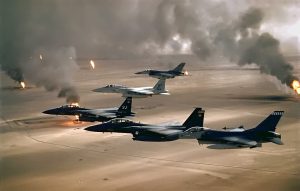
Shotguns are ancient technology, as firearms go. It is no stretch to say that the first handheld firearms that we would recognize as such were, in fact, “shotguns” as they usually fired multiple projectiles at ranges within one hundred yards…assuming, of course, that the weapon did not explode in your face. Saint Barbara was devoutly venerated for a reason.
Over the centuries, as metallurgy and chemistry made firearms increasingly reliable (and safer), the shotgun remained the main personal firearm, through the use of ‘buck and ball’ rounds. These combined a large musket ball with a few smaller pellets, essentially a middle ground between the ‘bird load’ used in hunting, the modern “double-aught” general purpose round, and the modern hunting slug.
As rifled weapons developed and matured throughout the 1700’s and into the 1800’s, shotgun-type loads began to fade out in military use. With the development of the ‘Minié ball’ in 1846, shotguns virtually disappeared from world armies as anything more than ‘foraging guns’.
This did not make the shotgun obsolete, however – far from it. Civilian hunting shotguns kept pace with military innovation, albeit for different purposes, and law enforcement still used shotguns for everything from countering rioters to concealed firepower for discrete protection of political figures.
With the United States’ entry into World War 1, however, the shotgun returned to the battlefield, with a vengeance.
In the confused, dirty and brutal world of trench warfare, the common handguns and bolt-action military rifles of the day simply did not function very well, resulting in all manner of impressively ingenious – and extremely vicious – improvised weapons. The German solution to this problem was the invention of the submachine gun, in the form of the MP-18. The Americans, however, brought in shotguns.

Largely consisting of Winchester Model 1897’s, American units were very familiar with the use of shotguns in recent combat, having used them during the Philippine-American War in 1899, and in the 1916 expedition into northern Mexico, to chase the bandit Pancho Villa. These rapid-firing, pump action shotguns quickly made their presence felt, to such an extent that the Imperial German General Staff – who had initiated modern gas warfare – issued a formal protest over the use of shotguns. When the United States reminded them of the shotgun’s history, and pointed out that the shotgun caused no more unusual damage than their own chemical weapons, the Germans threatened to execute any US soldier captured with a shotgun, or shotgun ammunition. In response, the United States threatened to execute any German soldier captured wielding flamethrowers or serrated bayonets. The Germans not only are never known to have executed any US shotgun troops, but apparently issued some captured 1897’s to their own ‘stormtroopers’ alongside the MP-18.
The Model 1987 Trench Gun, as it came to be called, continued in US military service until at least the 1950’s. As the Vietnam War heated up, however, US troops began to arrive with more modern weapons, such as the equally legendary Remington 870. With better ammunition technology – the old waxed paper or fully metal cased shells, having been replaced with the brass-plastic case ammunition – the modern combat shotgun was born.

With the ability to deliver devastating close-range firepower, the combat shotgun is an intimidating weapon in the extreme. Most combat shotguns run with eight rounds in their tube magazine, with another round “up the spout” in the chamber. If loaded with double-00 buckshot, that means a combat shotgun can fire about seventy to eighty.32 projectiles at high speed. Few, if any, other weapons can equal this level of fire. Additionally, unlike both pistol-caliber submachine guns and military select-fire rifles, most shotgun loads do not “over penetrate”, or pass through all manner of wall and roof materials, endangering civilians on the other side of those barriers.

In addition, shotgun shells have evolved over time to fire all kinds of strange loads, from flares to rubber bullets, “bean bag”, tear gas, and door breaching rounds. This flexibility, coupled to ease of use and a generally less alarming appearance to the public, have guaranteed the combat shotgun’s continued use by police, but has also made it a favorite for the military when units have to operate at close quarters.
Despite repeated flirtations with “assault shotguns”, there has never been much real interest in the idea, as no design submitted does any one task in an overly superior way to the combat shotguns currently in service, and any advances in ammunition design can usually be accommodated with minimal changes to the weapon itself.

The shotgun has been used in combat for centuries – and it isn’t going anywhere, anytime soon. Good design works.









